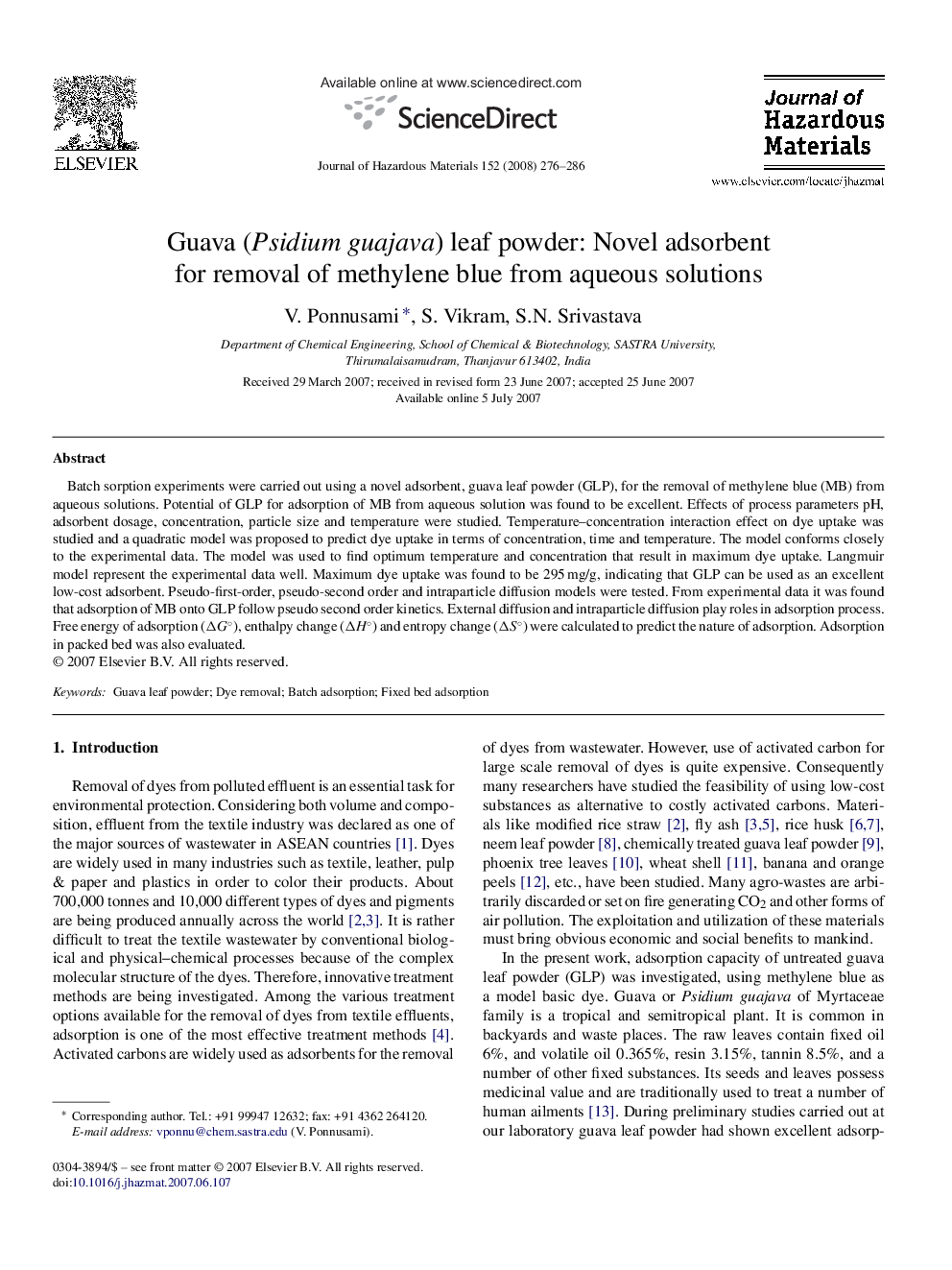| Article ID | Journal | Published Year | Pages | File Type |
|---|---|---|---|---|
| 583801 | Journal of Hazardous Materials | 2008 | 11 Pages |
Abstract
Batch sorption experiments were carried out using a novel adsorbent, guava leaf powder (GLP), for the removal of methylene blue (MB) from aqueous solutions. Potential of GLP for adsorption of MB from aqueous solution was found to be excellent. Effects of process parameters pH, adsorbent dosage, concentration, particle size and temperature were studied. Temperature-concentration interaction effect on dye uptake was studied and a quadratic model was proposed to predict dye uptake in terms of concentration, time and temperature. The model conforms closely to the experimental data. The model was used to find optimum temperature and concentration that result in maximum dye uptake. Langmuir model represent the experimental data well. Maximum dye uptake was found to be 295 mg/g, indicating that GLP can be used as an excellent low-cost adsorbent. Pseudo-first-order, pseudo-second order and intraparticle diffusion models were tested. From experimental data it was found that adsorption of MB onto GLP follow pseudo second order kinetics. External diffusion and intraparticle diffusion play roles in adsorption process. Free energy of adsorption (ÎG°), enthalpy change (ÎH°) and entropy change (ÎS°) were calculated to predict the nature of adsorption. Adsorption in packed bed was also evaluated.
Related Topics
Physical Sciences and Engineering
Chemical Engineering
Chemical Health and Safety
Authors
V. Ponnusami, S. Vikram, S.N. Srivastava,
